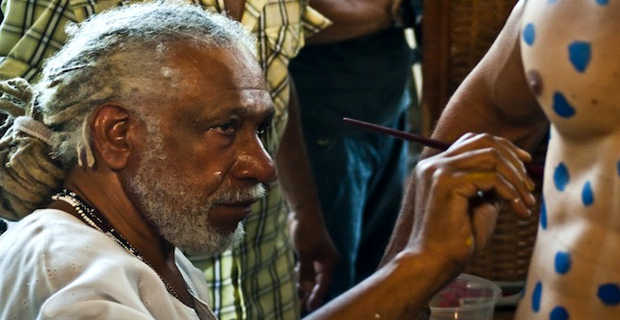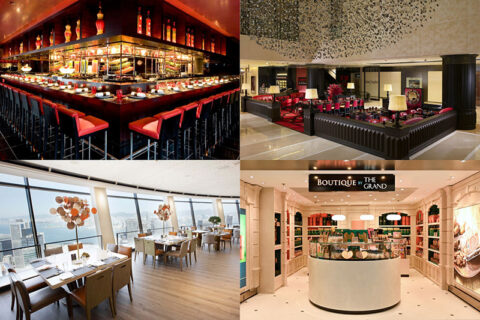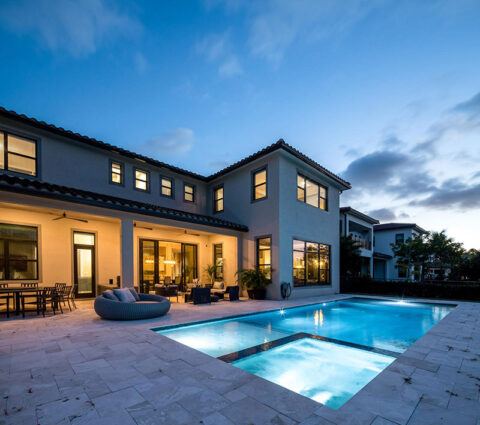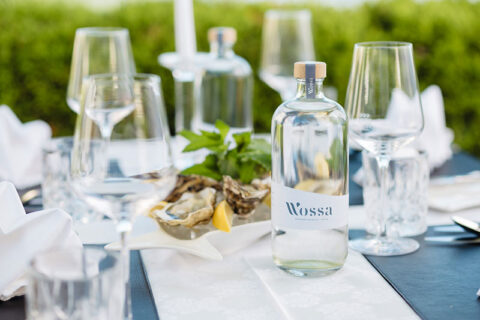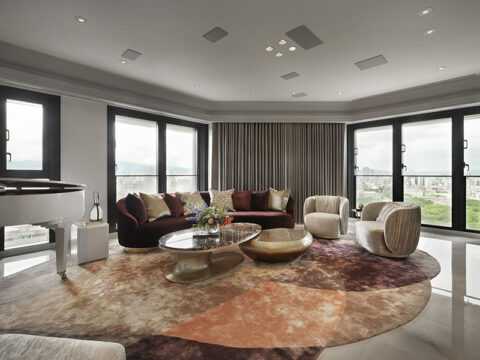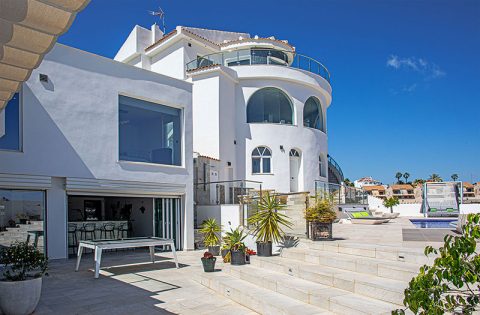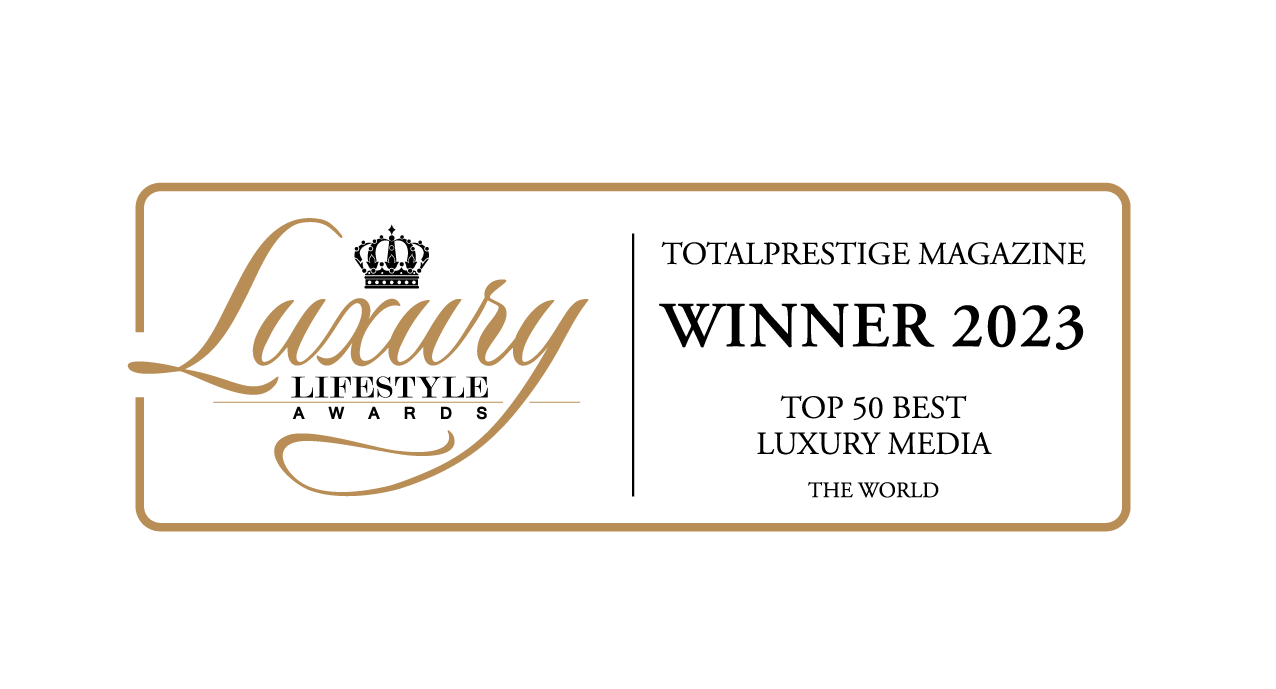The Havana Art Biennial 2019 Cuba Tour immerses travelers in one of Latin America’s most important artistic festivals.
The HAVANA ART BIENNIAL, whose 13th edition occurs this April 12th to May 12th, 2019, is one of the most prestigious artistic events in Latin America, and is the most important event on the calendar for Cuba’s visual arts community.
The Art Biennial – which is really a triennial- is a “complete artistic invasion” of Havana, a city that will also be celebrating the 500th anniversary of its founding this year.
Many of the artists who exhibit at the invitation-only Havana Art Biennial attack difficult sociological or theological questions, often representing concerns and conflicts that are prevalent in the artists’ regions, such as the pull between the traditional and the contemporary, the control of information or socio-political development, as it relates to that year’s theme.
The 2019 theme, or theoretical platform, as the organizers call it, is La Construccion de lo Posible, or “the Construction of the Possible.” It will also be the first year that the Art Biennial will spread outside of Havana and into the provinces, so expect events to pop up in cities such as Matanzas, Cienfuegos, Sancti Spiritus and Camaguey, with national and international visual artists there to set the stage.
According to the Wifredo Lam Art Center, the institution that organizes and runs the event, “this Cuban art festival will attempt to turn the city into an interactive cultural corridor between the creators and public.”
On the 2019 Havana Art Biennial Official Cuba Tour by Authentic Cuba Travel, you’ll get to interact with Cuban artists from all walks of life.
There are 2 HOTEL PACKAGES to suit every travel budget. The 4 stars option features the 4-Star Habana Riviera Hotel by Iberostar Hotels while the 5 stars option includes accommodation at the 5-Star Melia Cohiba Hotel by Melia Hotels. With ocean and city views, both hotels overlook the Havana’s Seawall Boulevard, in the Vedado district, Havana’s cultural and entertainment powerhouse.
Getting up-close and personal with Cuban well-established Cuban artists like Jose Fuster- the “Picasso of the Caribbean”, Salvador Gonzales with colossal murals exploring Cuba’s African heritage, Alicia Leal whose Matisse reminiscent work revolves around women, or Juan Moreira whose admiration for Wifredo Lam’s works take mysterious interpretations in his own creations will make tour participants feel like VIP insiders at the Cuban art festival and around and beyond the Cuban capital.
Chronicling modern Cuban history through the appropriation of official images, Jose Angel Toirac depicts Fidel Castro and other politicians in a Gerard Richter blurring manner. While Karlos Perez powerful surrealistic portraits show his own figurative vision of reality. 331 Art Space is the gallery of young artists, Frank Mujica, Alex Hernandez and Adrian Fernandez whose drawings, prints, and mixed media artworks can be seen in the beautifully refurbished 1941 mansion. With each studio visit, Cuba tour participants will appreciate how freedom of artistic expression and official censorship are in a constant struggle.
The trip to Cuba wouldn’t be complete without a healthy dose of culture, history and visits to some of the most renowned heritage sites in the country. From Old Havana, a UNESCO World Heritage Site, founded in 1519 by Spanish settlers by the Bay of Havana, and probably the most excellent surviving Spanish colonial city in the Americas; to Vinales Valley, a UNESCO World Heritage Site, considered one of the most beautiful natural sites in the Caribbean with mogotes (pincushion hills), tobacco fields and underground caves spread throughout the valley; and Matanzas City, a Cultural Heritage Site of Cuba, also known as the “Venice of Cuba” for the three rivers (Yumuri, Canimar and San Juan) that pass through the city or the “City of Bridges” because of the many bridges that connect the city’s neighbourhoods, the tour is a complete authentic immersion into Cuba’s heart and soul.
With its fully escorted art discovery tour to Cuba (which includes dedicated air-conditioning transportation, tour guide and bus driver services), the Cuba tour operator specialist also features Cuba’s best photographers such as experimental filmmaker and photographer, Juan Carlos Alom recognized by New York magazine, TIME as one of the top 100 photographers of the century in Latin America; Rene Pena, a Cuban photographer that uses the black body to reflect on human emotions and contradictions; and Ramses Batista’s whose extensive photography work, ranging from portraits to nudes, can be seen at his own gallery AMOS during the trip.
The booming of private businesses in Cuba, resulting from the latest economic reforms, is nowhere more evident than in the restaurant industry. During the escorted Cuba tour to the 13th the Havana Art Biennial 2019, American travelers will dine at first-rate stylish Cuban private restaurants (locally called Paladares) such as San Cristobal, Cafe Laurent, L’Atelier and Le Chansonier where restaurateurs are dramatically disrupting the traditional Cuban food scene.
Add to that unlimited access to all venues of the Havana Art Biennial, exclusive visits to the Cuba’s National Art School, the Experimental Printing Workshop, the Wifredo Lam Center, the Fototeca de Cuba, the Center for the Development of Visual Arts and other venues such as the trendiness industrial-scale Fabrica de Arte Cubano (Cuban Art Factory), and a guided tour of Museum of Fine Arts’ Cuban Collection, and you’ve got an immersion in the artistic culture of this magical island nation that’s not to be missed.
It is also a great time to visit Cuba. In 2016 and 2017, tourism was booming in Cuba. With over 4 million travelers hitting the ground in 2017 alone – 619,000 from the United States – the Caribbean island nation reported $3 billion in tourist revenue. The island – both privately and publicly – began investing in tourism services. Road conditions got better, along with restaurant service and wifi connections. Infrastructure improved to cater to travelers, and the experiences provided to tourists became more in-depth and interesting.
Then, in September of 2017, Hurricane Irma hit the island, right on the tail of the Trump Administration’s new travel restrictions for Americans traveling to Cuba. Tourism slowed, and although the island’s residents would prefer the onslaught, foreign visitors will find the improved infrastructure plus a lack of crowds to be a godsend when visiting this iconic island nation.
Without the lines of tour busses, travelers in popular places like Havana’s Old City or Vinales Valler are getting a more personalized experience and improved service. There’s more time to engage with local people and fewer crowds vying for entry to the country’s most popular sites, meaning you can take your time and explore the beauty of the country at your leisure.
In August 2018, after a comprehensive risks review for American travelers in the Caribbean island, the travel alert to Cuba was downgraded to level 2 (similar to France, Italy or Germany) by the US Government.
The 12th Edition of the Havana Art Biennial, which took place in 2015, celebrated 30 years since the festival’s founding, and featured 130 artists from over 40 countries including Afghanistan, Brazil, Guatemala, South Korea, Mexico and more.
The 2015 Art Biennial was unique in that it had no central exhibition space or even an official opening ceremony. According to the organizers, “art will spill out of the galleries, bursting into the streets which will be bubbling with ideas. It won’t be a Biennial for collectors or gallerists, but rather to make a connection with the city.”
Havana-based artist Arles del Rio, known for his interactive art, might have had the most popular installation that achieved this sought after interconnection. His work, entitled “Resaca” turned the city’s concrete boardwalk into a tropical sandy beach, complete with umbrellas and lounge chairs. The interactive art piece was crammed full around the clock by Cubans and foreign visitors alike.
Since its inception in 1984, the Havana Art Biennial has become one of the most important artistic events in Latin America. Beyond Cuba, the event features artists from across Latin America and “the South,” as well as from Africa, Asia and the Middle East, making it one of the most important artistic events for “non-Western” art.
In general, the artists selected by the event’s curators produce work that addresses universal concerns and conflicts, along with those particularly important to the artists’ home regions. The event itself aims to support the individual artists and the art community, over gallerists and collectors.
The event is also unique in that it promotes work in non-physical mediums; from performance based art, to those incorporating sound, light, smell and vibrations.
“The history of art is in the museum, but contemporary art is contextualized outside with architecture, design, and the culture at large,” said Bienal co-founder Nelson Herrera Ysla in an interview. “More and more artists have become social activists. There’s a lot of sound art and art you can smell. We are trying to leave behind the traditional ways of making art, and the traditional meanings.”
It’s simpler than ever for US organizations and academic institutions to organize and sponsor a trip to Cuba, so that their members can attend the Havana Art Biennial in 2019, under the provisions of the General License for Educational Activities, People-to-people Cuba Travel, Professional Research, Public Performances & Exhibitions, Support for the Cuban People, and other categories. The general license does not require case-by-case approval from the Department of The Treasury’s Office of Foreign Assets Control (OFAC).
As long as the trip to Cuba meets the guidelines established within each Cuba travel category, and with the support of experienced USA Cuba travel operators, organizations such as US art museums, councils and foundations as well as US universities and colleges of the arts and design and others can legally travel to Cuba to take part in this international event.
Harvard University is one such school whose Alumni Association organized a trip to Cuba to allow their students to attend the 2015 Havana Art Biennial. Thanks to careful planning, their students were able to immerse themselves in the incredible architecture, art and culture that Cuba’s capital city has to offer.
Since Obama eased travel regulations from the US to Cuba in 2016, there are more commercial flights departing from the United States than there had been in the past 50 years. The Department of Transportation allows for up to 20 daily commercial flights between the U.S. and Havana, which are operated by airline companies including American Airlines, United, Delta, JetBlue and Southwest.
These popular flights leave from hubs such as Miami International Airport, JFK, Atlanta and more, with new routes opening in 2018, when JetBlue will be launching the first-ever nonstop flight between Boston and Havana in November.
Booking your spot on the Havana Art Biennial tour is as easy as visiting Authentic Cuba Tours’ website, where you can see detailed itineraries, accommodation offerings, included activities, events and more.
Beyond being educational and culturally enriching, travel to Cuba provides and unforgettable experience for those lucky enough to visit the Caribbean’s most colorful island. Add to that the immersive artistic culture of the magic of the Havana Art Biennial, and you’ve got the making of a once-in-a-lifetime travel experience.

